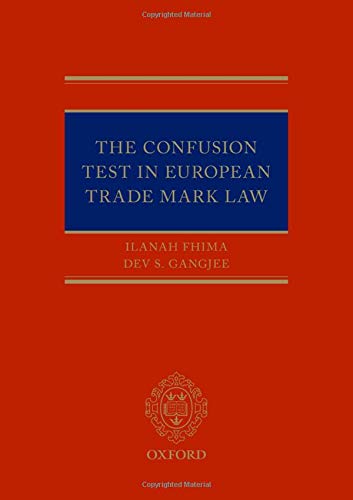Published Oct. 30, 2019
The Confusion Test in European Trade Mark Law

- ISBN:
- 978-0-19-967433-6
- The only work to focus on trade mark confusion and systematically examine all aspects of in relation to issues of trade mark registrability and infringement
- A timely and up-to-date discussion of this fundamental legal doctrine, following a significant number of CJEU and GC judgements in this area.
- Analyses topical issues in trade mark law which involve likelihood of confusion, such as use on the internet, initial interest confusion and post-sale confusion.
- Valuable comparative perspectives on the law and practice of the UK, EU, and United States.
Historically, likelihood of confusion has been the core infringement test for trade mark law, and it remains the most frequently applied test in infringement actions by far. However, there are noticeable differences in how it is applied by the Court of Justice of the European Union (CJEU), the General Court, and national courts; and questionable outcomes when it is applied in novel situations. This …
- The only work to focus on trade mark confusion and systematically examine all aspects of in relation to issues of trade mark registrability and infringement
- A timely and up-to-date discussion of this fundamental legal doctrine, following a significant number of CJEU and GC judgements in this area.
- Analyses topical issues in trade mark law which involve likelihood of confusion, such as use on the internet, initial interest confusion and post-sale confusion.
- Valuable comparative perspectives on the law and practice of the UK, EU, and United States.
Historically, likelihood of confusion has been the core infringement test for trade mark law, and it remains the most frequently applied test in infringement actions by far. However, there are noticeable differences in how it is applied by the Court of Justice of the European Union (CJEU), the General Court, and national courts; and questionable outcomes when it is applied in novel situations. This book is the first comprehensive and systematic account of the confusion test within the harmonised European trade mark system. It considers how the test is applied by national trade mark registries across EU member states, by the European Union Intellectual Property Office (EUIPO), by national courts, and by the CJEU. It offers practical guidance, while also evaluating the viability of more recent developments such as initial-interest confusion, post-sale confusion and consumer responses to uses of trade marks on the internet. The book analyses three distinct strata of legal doctrine: the decisions of the CJEU, including the General Court; the extensive body of decisions by EUIPO; and the application of harmonised trade mark law by courts of member states, focusing on leading decisions as well as wayward ones. It also draws upon the legal position in the US to illuminate these issues.